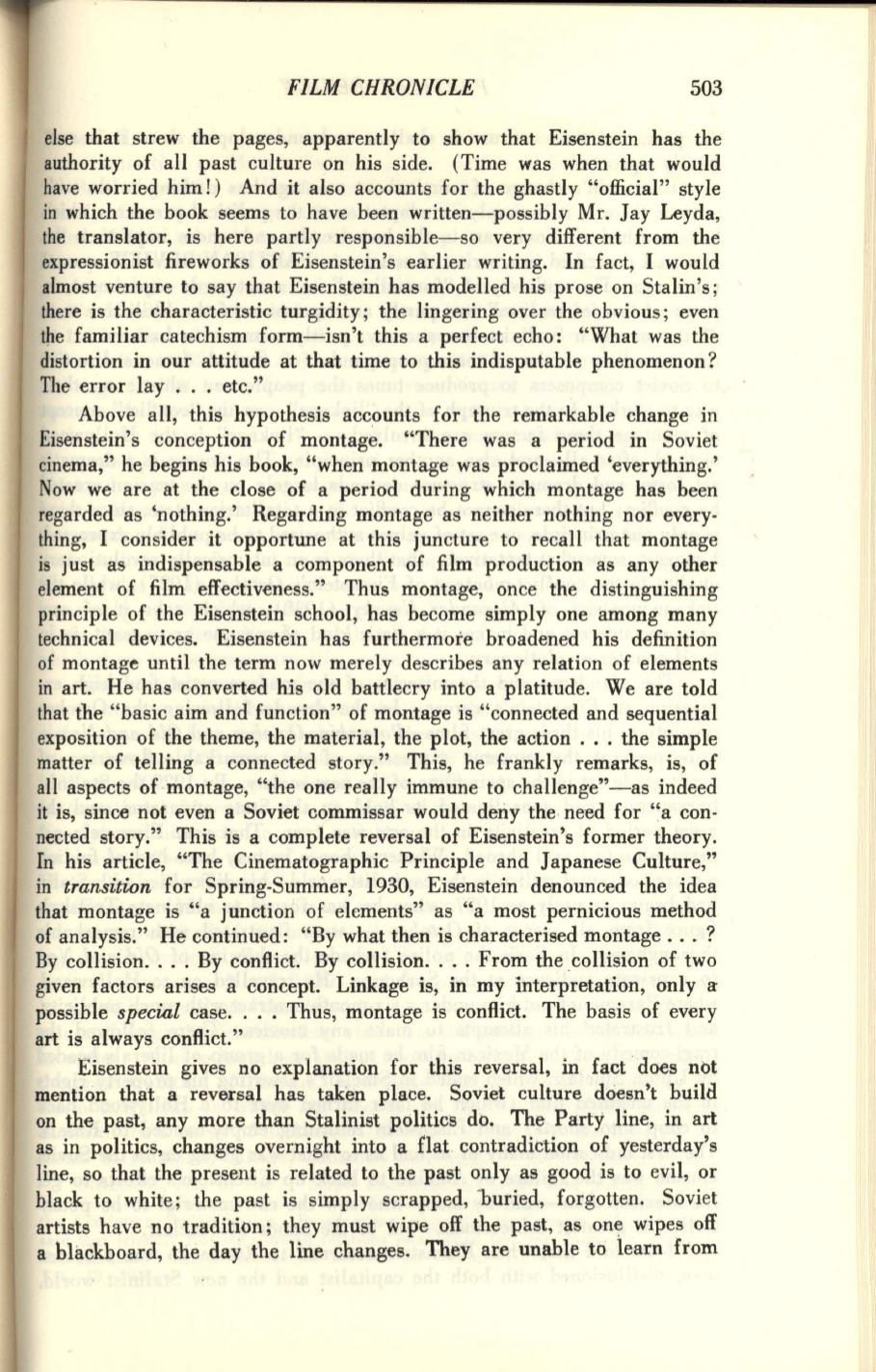
FILM CHRONICLE
503
else that strew the pages, apparently to show that Eisenstein has the
authority of all past culture on his side. (Time was when that would
have worried him!) And it also accounts for the ghastly "official" style
in which the book seems to have been written-possibly Mr. Jay Leyda,
the translator, is here partly responsible-so very different from the
expressionist fireworks of Eisenstein's earlier writing. In fact, I would
almost venture to say that Eisenstein has modelled his prose on Stalin's;
there is the characteristic turgidity; the lingering over the obvious; even
the familiar catechism form-isn't this a perfect echo: "What was the
distortion in our attitude at that time to this indisputable phenomenon?
The error lay ... etc."
Above all, this hypothesis accounts for the remarkable change in
Eisenstein's conception of montage. "There was a period in Soviet
cinema," he begins his book, "when montage was proclaimed 'everything.'
Now we are at the close of a period during which montage has been
regarded as 'nothing.' Regarding montage as neither nothing nor every–
thing, I consider it opportune at this juncture to recall that montage
is just as indispensable a component of film production as any other
element of film effectiveness." Thus montage, once the distinguishing
principle of the Eisenstein school, has become simply one among many
technical devices. Eisenstein has furthermore broadened his definition
of montage until the term now merely describes any relation of elements
in art. He has converted his old battlecry into a platitude. We are told
that the "basic aim and function" of montage is "connected and sequential
exposition of the theme, the material, the plot, the action ... the simple
matter of telling a connected story." This, he frankly remarks, is, of
all aspects of montage, "the one really immune to challenge"-as indeed
it is, since not even a Soviet commissar would deny the need for "a con–
nected story." This is a complete reversal of Eisenstein's former theory.
In his article, "The Cinematographic Principle and Japanese Culture,"
in
transition
for Spring-Summer, 1930, Eisenstein denounced the idea
that montage is "a junction of elements" as "a most pernicious method
of analysis." He continued: "By what then is characterised montage ... ?
By collision.... By conflict. By collision.... From the .collision of two
given factors arises a concept. Linkage is, in my interpretation, only a
possible
special
case.... Thus, montage is conflict. The basis of every
art is always conflict."
Eisenstein gives no explanation for this reversal, in fact does not
mention that a reversal has taken place. Soviet culture doesn't build
on the past, any more than Stalinist politics do. The Party line, in art
as in politics, changes overnight into a flat contradiction of yesterday's
line, so that the present is related to the past only as good is to evil, or
black to white; the past is simply scrapped, buried, forgotten. Soviet
artists have no tradition; they must wipe off the past, as one wipes off
a blackboard, the day the line changes. They are unable to learn from


